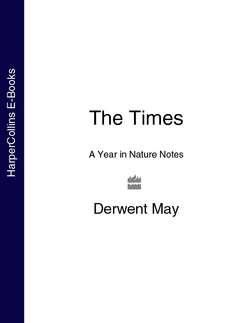Читать книгу The Times A Year in Nature Notes - Derwent May - Страница 88
22nd March
ОглавлениеLADYBIRDS ARE SITTING on leaves, warming up. After they come out of hibernation, they cannot fly until they have sat for some time in the sun’s rays. Most of these early ladybirds are seven-spot ladybirds. They take off in a rather awkward way, with the wing-cases first lifted into a V behind their head and the wings then popping up from beneath them. The smaller two-spot ladybirds will soon appear; there are also ten-spot, eleven-spot, and yellow-and-black fourteen-spot ladybirds. They will have many broods, and they and their larvae will feed on aphids all the summer long.
Some red dead-nettles survived the winter; now a new crop of them is springing up everywhere. They have rich purple to pink flowers, which nestle at the top of the stem in a little rosette of purple leaves, so that the whole crown is coloured. Countless thousands of them can spread across a field of old stubble that has not been ploughed in.
The bold yellow blossoms of the dandelion are starting to line the roadsides, wherever there is an open patch. On hazel bushes, some of the male catkins have already shed their pollen and are turning brown.
